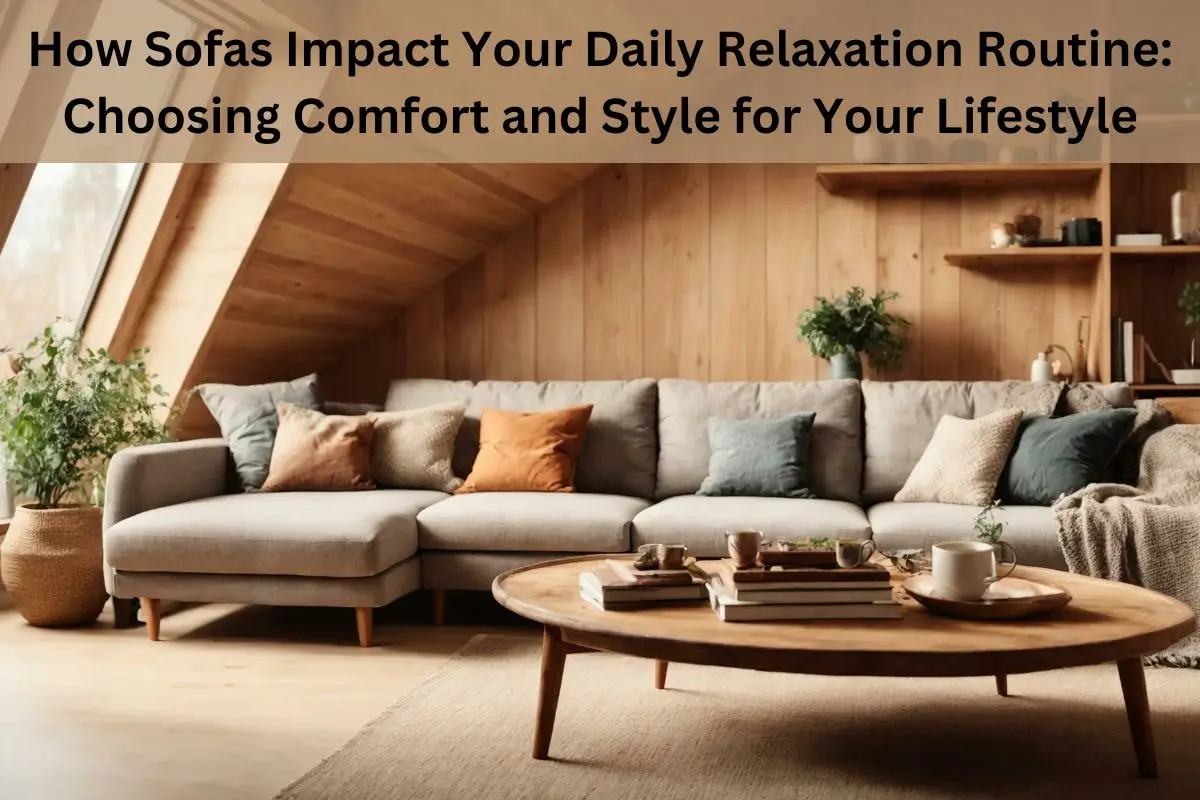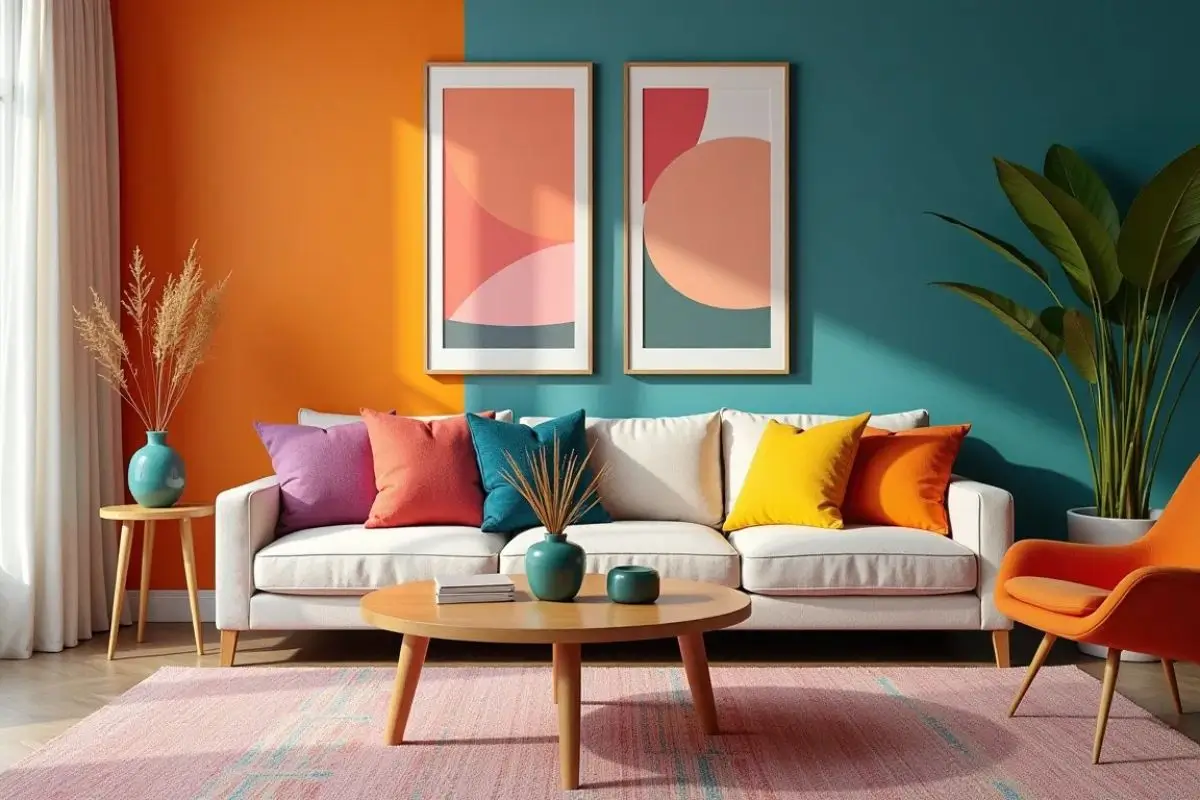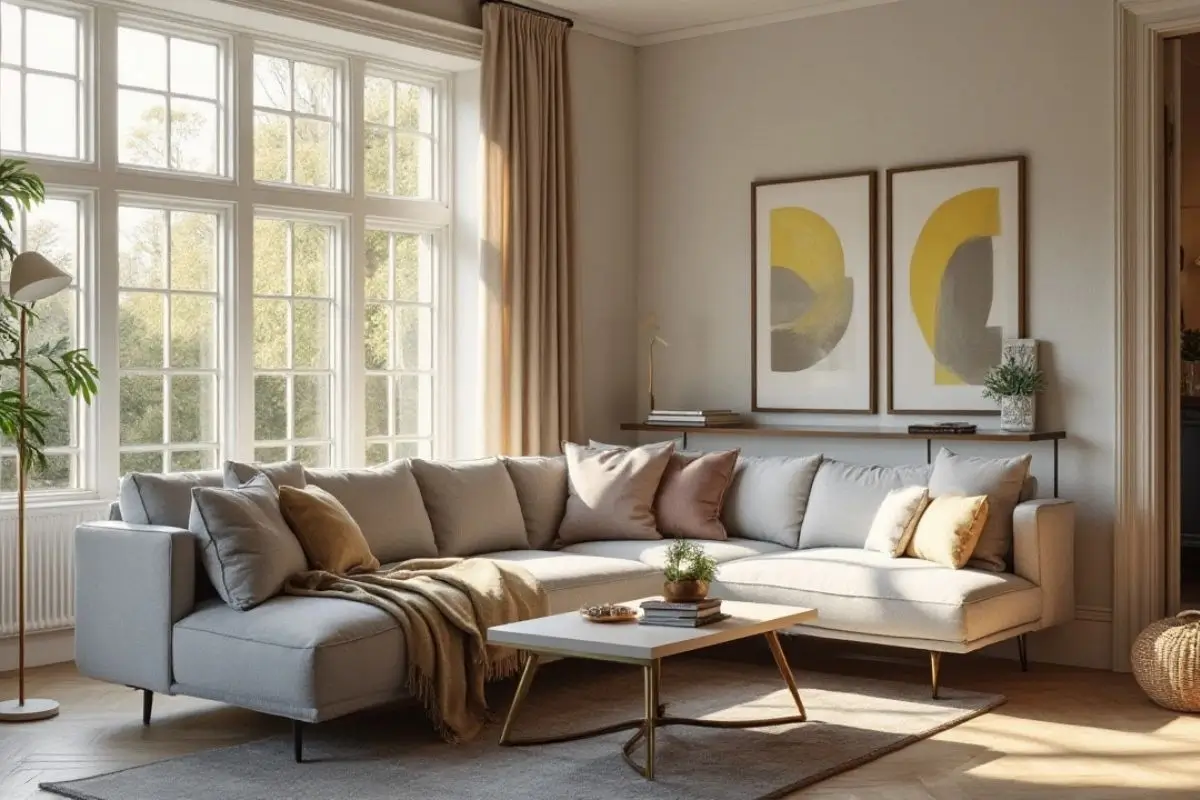How Sofas Impact Your Daily Relaxation Routine: Choosing Comfort and Style for Your Lifestyle
A sofa is more than just a piece of furniture; it’s the heart of your home where you unwind, connect, and rejuvenate. The right sofa can transform your living space into a haven of relaxation, while a poorly chosen one can disrupt your comfort. This blog explores how sofas impact your daily life and provides a guide to choosing one that aligns with your lifestyle, blending comfort and style seamlessly. Let’s dive into the features, functions, and factors to consider for your ideal relaxation companion.
The Connection Between Sofas and Relaxation
Sofas are central to your relaxation routine, offering a sanctuary to decompress after a long day. Their design, material, and layout directly influence how restful your time spent on them feels. A well-made sofa provides the physical support needed for proper posture while offering a plush embrace for mental relaxation. Whether you’re binge-watching your favorite series, catching up on a book, or napping, your sofa sets the tone for these moments. Beyond physical comfort, the sofa symbolizes a retreat from stress, where you can reconnect with loved ones or enjoy solitude. Its position in the home—typically in the living room—makes it the anchor for relaxation and socialization. Investing in a sofa that meets your comfort and aesthetic preferences is crucial for enhancing your downtime, turning your living space into a personal oasis.
Comfort Unleashed: Features That Make or Break a Sofa
When choosing a sofa, comfort should take precedence. Key features include high-quality cushioning materials such as memory foam, which molds to your body, or feather-filled options for a luxurious feel. The upholstery also plays a vital role; fabrics like cotton or linen are soft and breathable, while leather offers a sleek, firm finish. Seating depth and height matter too—deep seats are ideal for lounging, while standard-depth sofas suit upright seating. Armrests, lumbar support, and recliner functionalities can elevate the comfort level, catering to specific preferences. Don’t overlook the frame’s construction; hardwood frames ensure durability and longevity. Finally, test the sofa by sitting on it to gauge its firmness and support. A comfortable sofa not only enhances relaxation but also promotes better health by supporting your body in the right ways, making it an essential piece for everyday life.
From Classic to Contemporary: Finding a Style That Speaks to You
Sofas are a unique blend of style and practicality, allowing you to express your personality while serving as a functional centerpiece. From sleek, modern designs with clean lines to timeless classics with tufted upholstery, the options are endless. Modular sofas are perfect for versatility, allowing you to rearrange sections to fit different spaces. Recliners add an element of luxury, while convertible sofa beds are ideal for multifunctional rooms. When selecting a sofa, think about how its design aligns with your home’s decor and your daily needs. Neutral colors like beige or gray are versatile, while bold hues or patterns can make a statement. Beyond aesthetics, consider practical elements like hidden storage or USB ports. By balancing style with functionality, you can choose a sofa that not only complements your home but also enhances your everyday comfort and convenience.
Don’t Let Your Sofa Hurt You: Health Risks of the Wrong Choice
A poorly designed sofa can negatively impact your health over time. Sofas that lack proper lumbar support can lead to back pain and poor posture, while excessively soft cushions may not provide the firmness required for spine alignment. Long-term use of such sofas might exacerbate joint or muscle issues, especially for those with pre-existing conditions. Additionally, low-quality materials can cause discomfort, trapping heat or irritating sensitive skin. To avoid these issues, choose sofas with ergonomic features such as contoured seats, adjustable headrests, and firm yet comfortable cushions. For individuals with specific health concerns, orthopedic sofas designed for optimal support are worth considering. Remember, your sofa isn’t just a decorative element—it’s a functional piece that affects your physical well-being. Investing in a high-quality sofa ensures a healthier, more comfortable experience for years to come.
The Lifestyle Factor: Matching Sofas to Your Needs
Your lifestyle should guide your sofa choice. For families with children or pets, durability and stain-resistant materials like microfiber are essential. If you frequently host guests, consider a large sectional or a sofa bed for added functionality. For minimalists or those with compact living spaces, a sleek loveseat or modular design offers flexibility without sacrificing style. Active households may prefer easy-to-clean fabrics, while those seeking luxury might opt for leather or velvet finishes. Consider your daily habits, too—whether you prefer lounging, sitting upright, or reclining. A sofa tailored to your lifestyle enhances not just your living space but also your quality of life. By aligning your choice with your needs, you ensure your sofa becomes a seamless part of your daily relaxation routine, rather than a hindrance.
Beat the Heat or Embrace the Chill: Sofas for Every Season
Sofas should be chosen with local climates and seasonal preferences in mind. In hot climates, breathable fabrics like cotton or linen in lighter shades help maintain a cool, inviting atmosphere. For colder regions, plush materials like velvet or chenille add warmth and coziness. Seasonal updates can also refresh your sofa’s look and feel—add throw blankets and cushions during winter for added comfort, or swap to light, airy covers in summer. Consider humidity levels, as some materials may warp or deteriorate in extreme conditions. Abu Dhabi residents, for instance, might prioritize heat-resistant materials that withstand high temperatures. Additionally, adapting your sofa to the seasons enhances its longevity and ensures year-round comfort. By factoring in these considerations, you can maintain a sofa that remains both stylish and practical, no matter the time of year.
Sustainable Comfort: Choosing Eco-Friendly Sofas That Last
Sustainability is an increasingly important factor in furniture selection. Eco-conscious buyers can look for sofas made from responsibly sourced wood, recycled materials, or biodegradable fabrics. Brands that use non-toxic dyes and finishes are safer for both your home and the environment. Opting for durable, high-quality pieces reduces waste by ensuring the sofa lasts longer. Certifications like FSC (Forest Stewardship Council) for wood or OEKO-TEX for textiles provide assurance of ethical practices. Additionally, some manufacturers offer sofas with replaceable parts, extending their usability. By choosing sustainable and ethically made sofas, you not only support the planet but also invest in a healthier, safer living environment. This approach aligns with modern values of environmental responsibility while ensuring your comfort is not compromised.
Keep It Like New: Maintenance Tips for Long-Lasting Comfort
Proper maintenance is essential for keeping your sofa in top condition. Start with regular vacuuming to remove dust and debris, especially in crevices. For fabric sofas, use appropriate cleaning agents to tackle stains without damaging the material. Leather sofas benefit from periodic conditioning to prevent cracking, while covers on washable sofas can be easily refreshed. Rotating cushions prevents uneven wear, and reinforcing sagging seats with additional support can restore their firmness. Avoid exposing your sofa to direct sunlight, which can fade colors and weaken fabrics over time. By incorporating these simple maintenance practices, you can extend the lifespan of your sofa, ensuring it remains a comfortable and stylish centerpiece for years to come.
Cost vs. Quality: What’s Worth the Investment?
When it comes to sofas, balancing cost and quality is key. Budget-friendly options may save money initially but often sacrifice durability, leading to frequent replacements. On the other hand, high-end sofas with premium materials and craftsmanship can be a worthwhile investment for long-term comfort and style. Look for sofas that offer the best value—durable frames, quality upholstery, and supportive cushioning. Consider additional features like recliners or built-in USB ports if they align with your needs. While it might be tempting to cut corners, investing in a quality sofa ensures better performance, longevity, and satisfaction. Ultimately, a well-made sofa is not just a purchase but an investment in your relaxation and lifestyle.
Your Personal Sanctuary: Designing a Relaxation Space Around Your Sofa
A sofa becomes truly yours when it reflects your style and needs. Accessories like decorative cushions, plush throws, or stylish side tables can enhance its appeal. For added comfort, consider nearby lighting fixtures or rugs to create a cohesive relaxation zone. Arranging plants or artwork around your sofa adds personality to the space, creating a sanctuary that’s uniquely yours. Personalization is about more than aesthetics—it’s about crafting an environment that feels like home, encouraging you to relax and recharge. By paying attention to the details, you can transform your sofa area into the ultimate relaxation zone tailored to your preferences.
Conclusion
Choosing the right sofa is an art that combines comfort, style, and practicality. From supporting your health to complementing your lifestyle and aligning with sustainability, sofas play a vital role in your daily relaxation routine. By investing time and thought into this decision, you can create a living space that promotes comfort, fosters connections, and reflects your personal style. Remember, the perfect sofa is more than a piece of furniture—it’s the foundation of your comfort and well-being.
Tags: sofa

